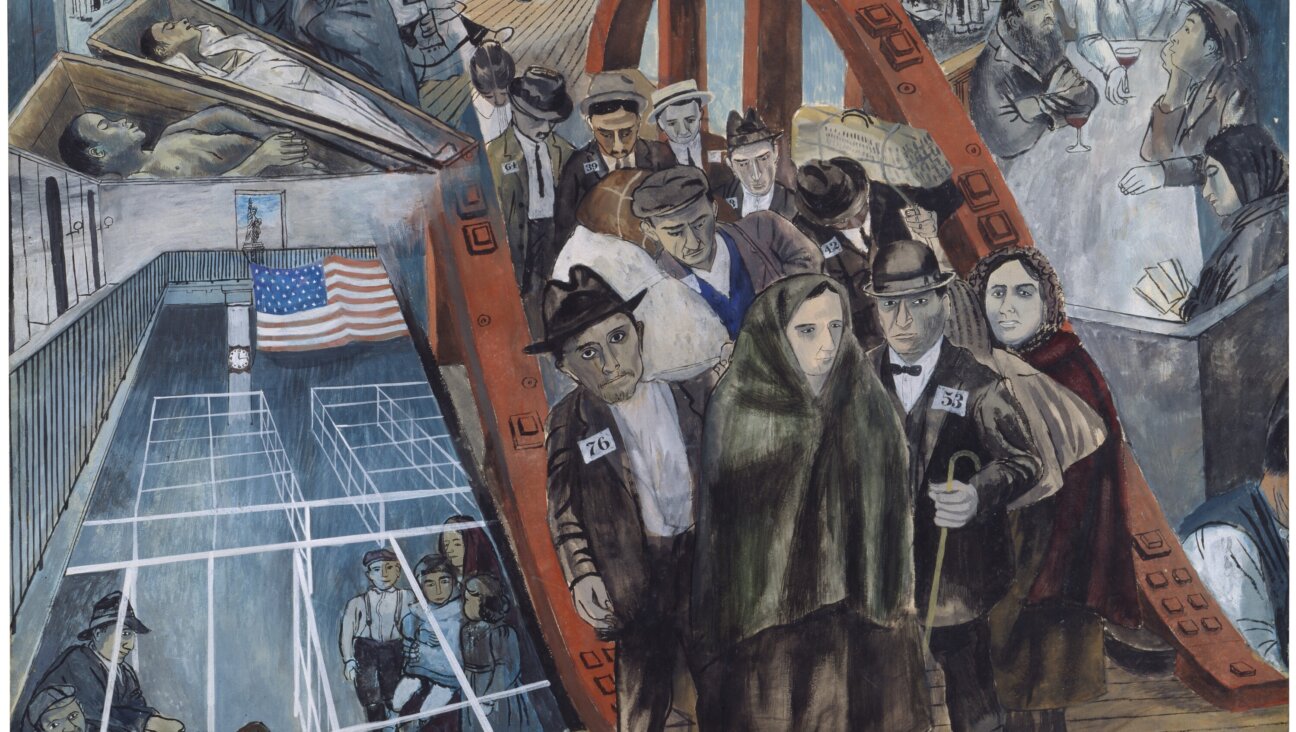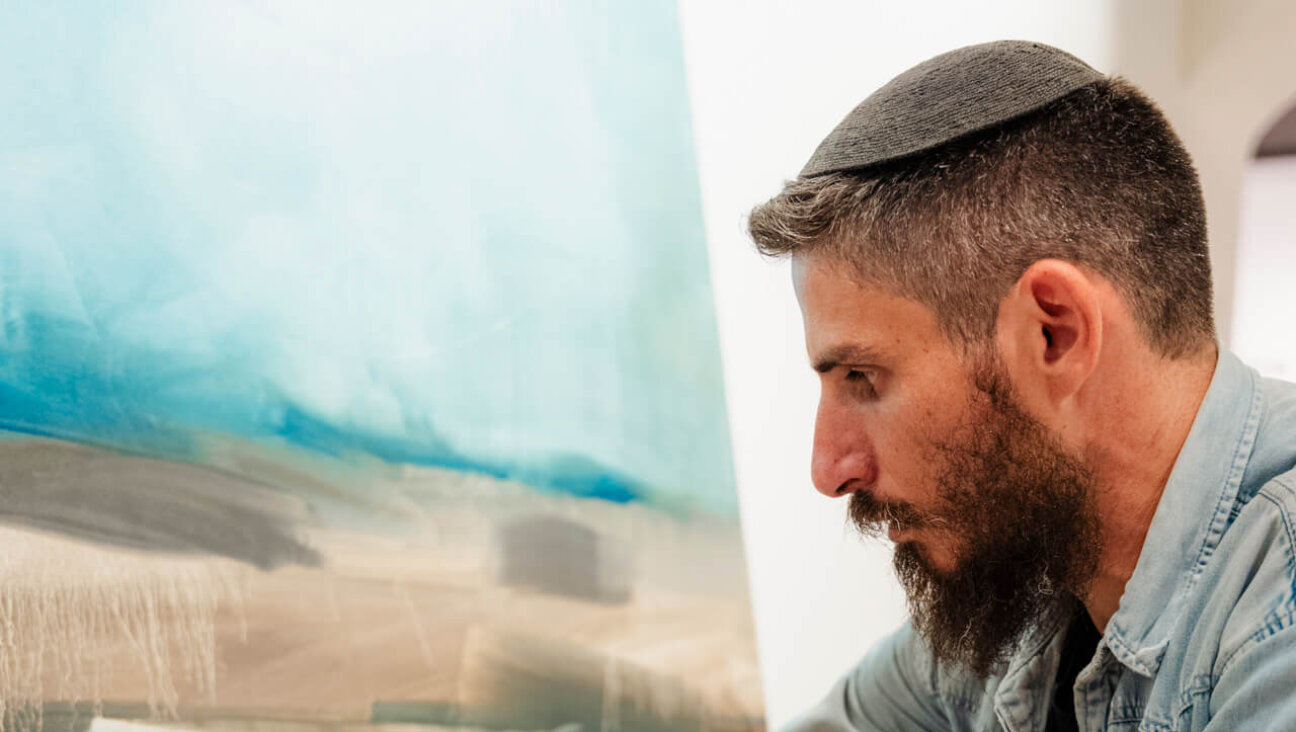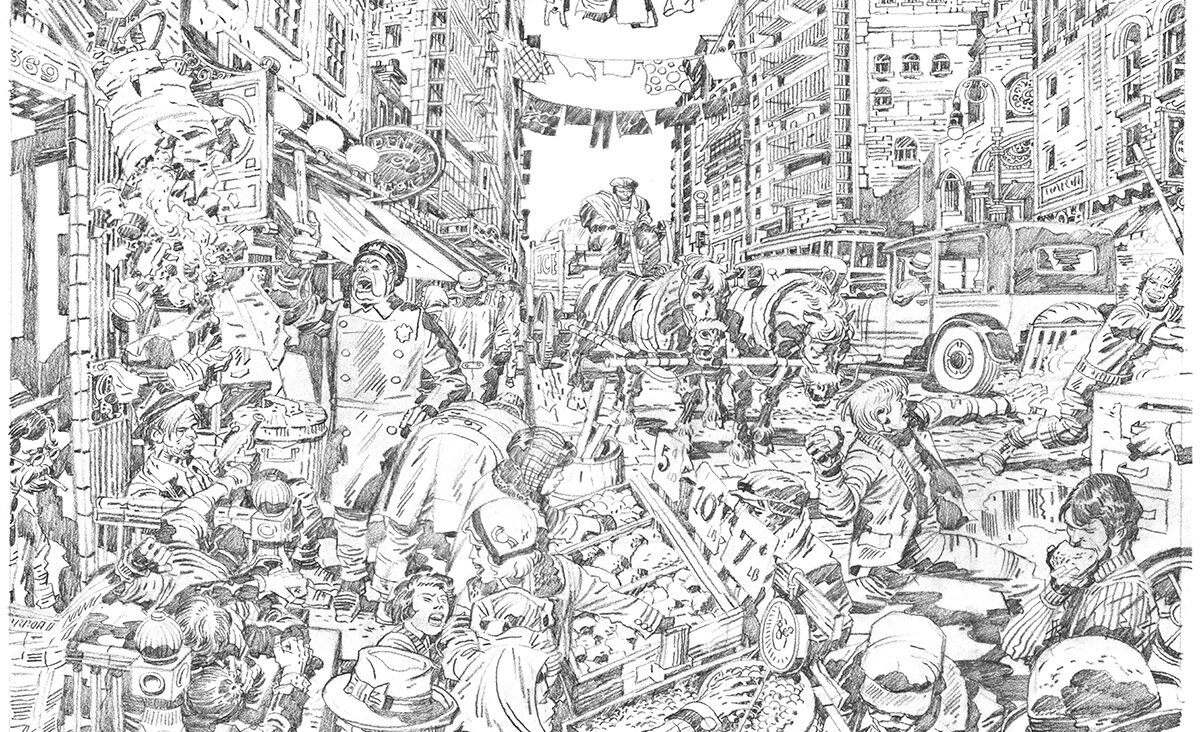Roman Vishniac’s Photographs Will Move West To UC Berkeley

American photographer, Arthur Rothstein (1915 – 1985) (left), and Russian-American photographer, Roman Vishniac (1897 – 1990), at the Witkin Gallery, New York City, USA, October 1979. Image by Getty Images/ Barbara Alper / Contributor
The photographer Roman Vishniac resettled many times. Born in St. Petersburg, he fled to Berlin in the aftermath of the Russian Revolution; in the 1930s he returned to Eastern Europe to document shtetl life; and he ultimately fled from Germany in the 1940s to live in New York, where the bulk of his photographs have been housed for the last decade. Now, Vishniac’s portfolio, including 20 binders of unprinted contact sheets, will have a permanent home at UC Berkeley in California.
Berkeley News reports the collection, gifted to the university’s Magnes Collection of Jewish Art and Life by Vishniac’s daughter Mara Vishniac Kohn, and her children, Naomi and Ben Schiff will be moved to UC Berkeley from the International Center of Photography in New York and remain there indefinitely.
“My goals for this collection are to keep the work alive, and also, in a way, keep the people from dying again,” Vishniac Kohn told Berkeley News. “That means we don’t want them really hidden away in some archive that no one ever looks at. I had a feeling of having arrived at a new possibility when I first came to The Magnes and looked around and felt the spirit of the place.”
Taken collectively, the gift, which includes 500 photographic prints, about 10,000 negatives and 40 albums of slides is representative of Vishniac’s wide-ranging interests. In his seven decade career the Russian-born artist used his Leica and Rolleiflex cameras to capture the last days of Jewish villages, urban street scenes, portraits of cultural icons like Einstein and Chagall and even microscopic organisms. The full scope of his work will only come to light when his undeveloped film is processed.
“We mean this to be a living museum and archive, shaped through research and learning in partnership with our faculty and students,” Francesco Spagnolo, the curator of the exhibit said. “The thing is there is a lot in this collection that is not yet known. And that’s what is exciting for us. We only know that we’re going to have some surprises as we unpack and catalogue.”
The International Center of Photography will retain 125 photos and 51 other artifacts from Vishniac’s archives, but the majority of the work will have an unrestricted run at Berkeley where it’s expected to gain the attention of photography students, Jewish studies students and even students and faculty in the sciences for its 1,500 scientific prints.
“This is a collection of Jewish art and life, but not just that,” Ben Schiff, Vishniac’s grandson and the former chair of the politics department at Oberlin College, said. “We’ve felt that the proper place for this was in a university setting. Naomi and I, together with Mara, settled on UC and The Magnes as the best place for the study of all these photos.”
PJ Grisar is the Forward’s culture intern. He can be reached at [email protected].
























